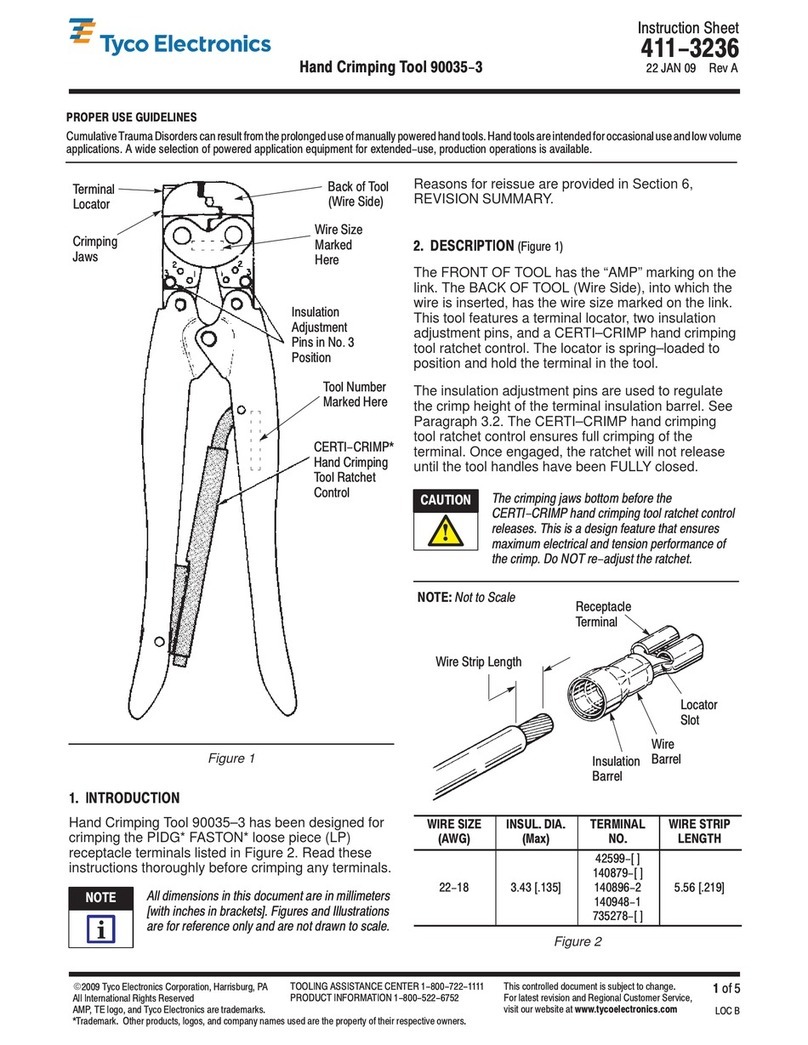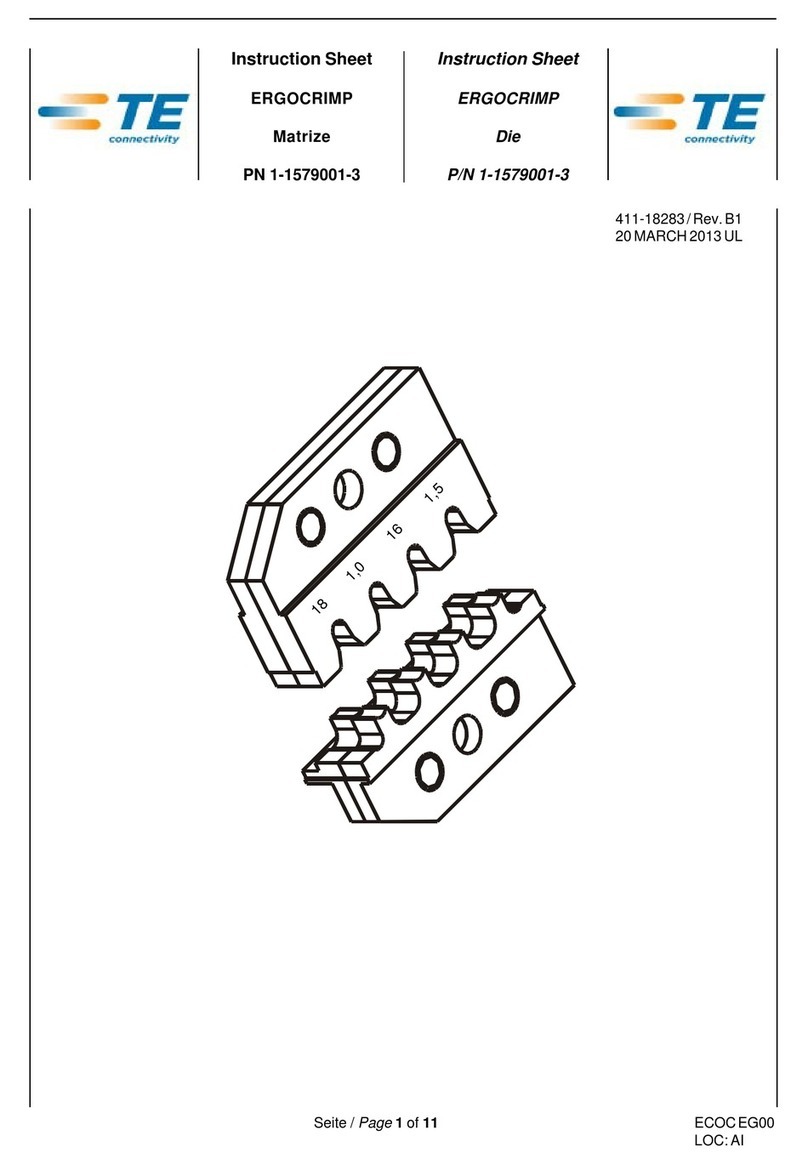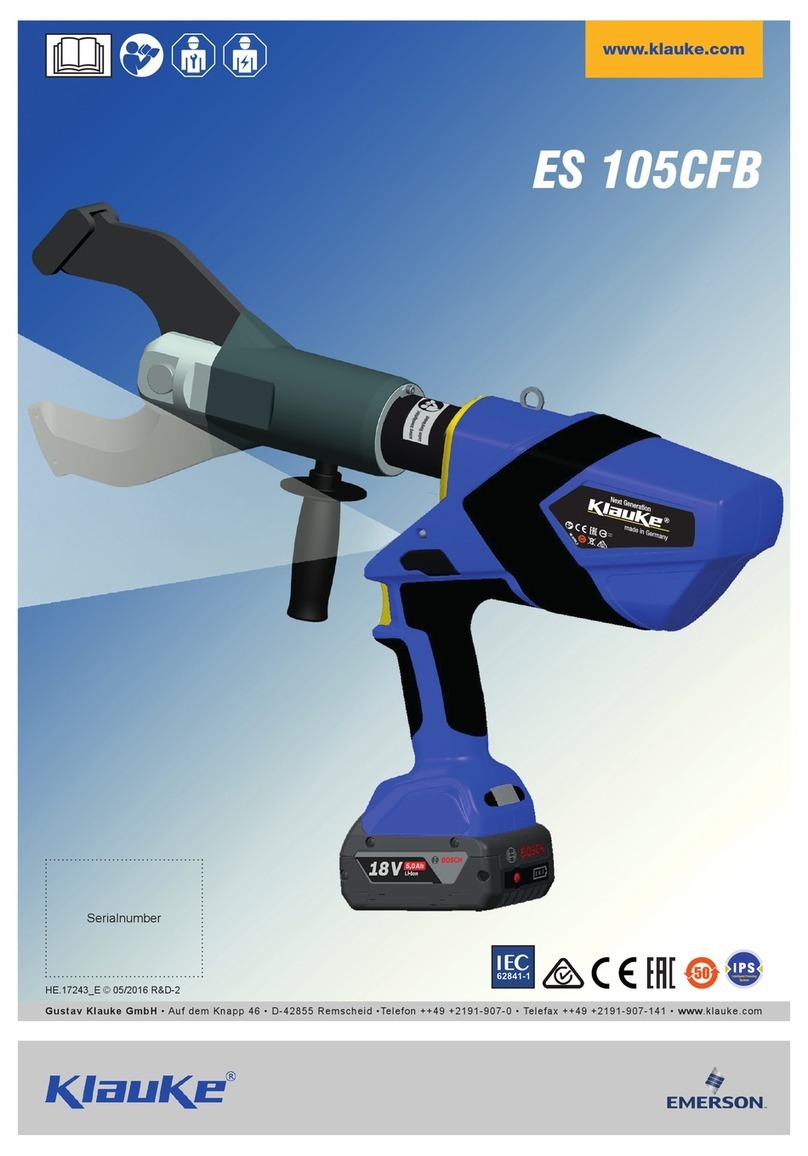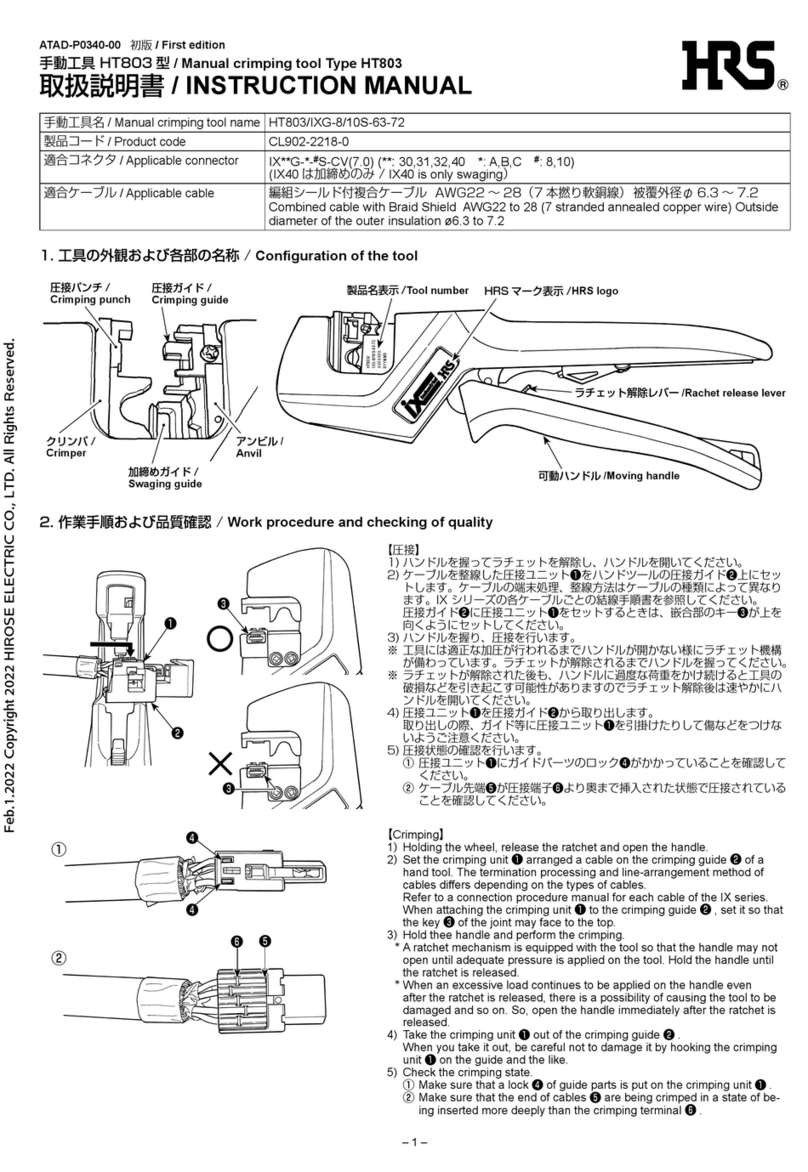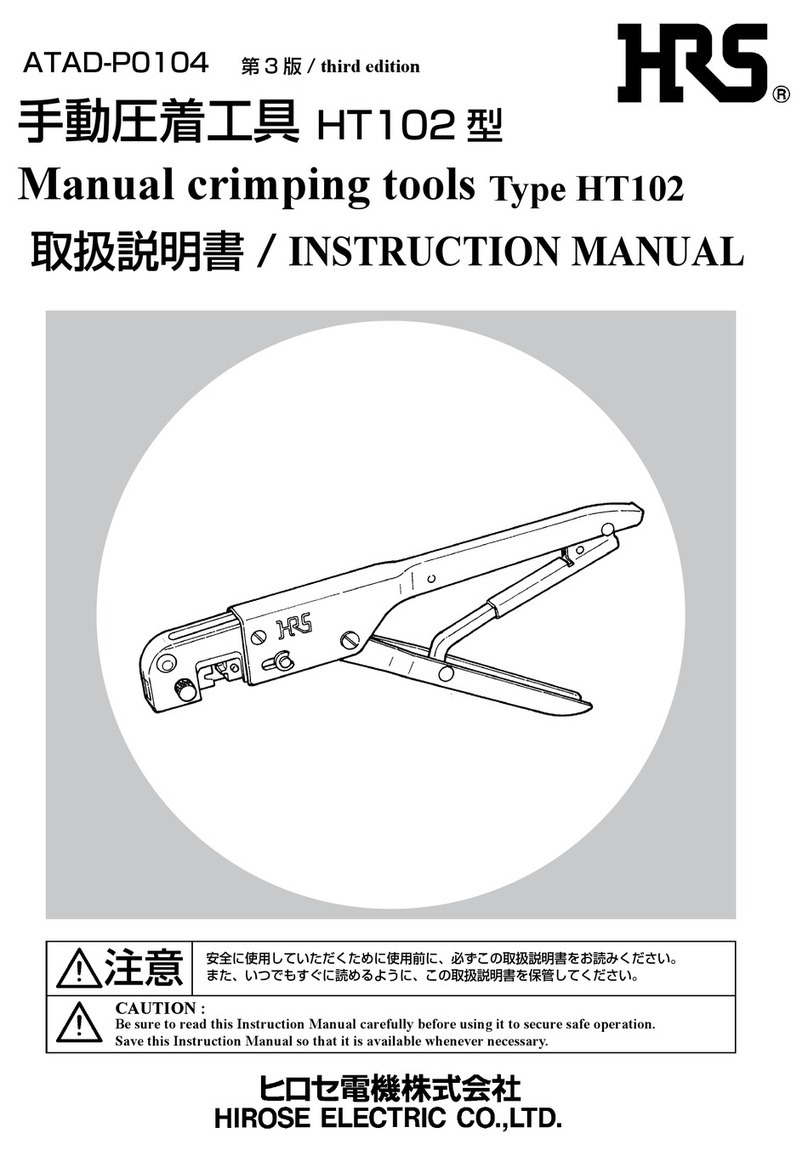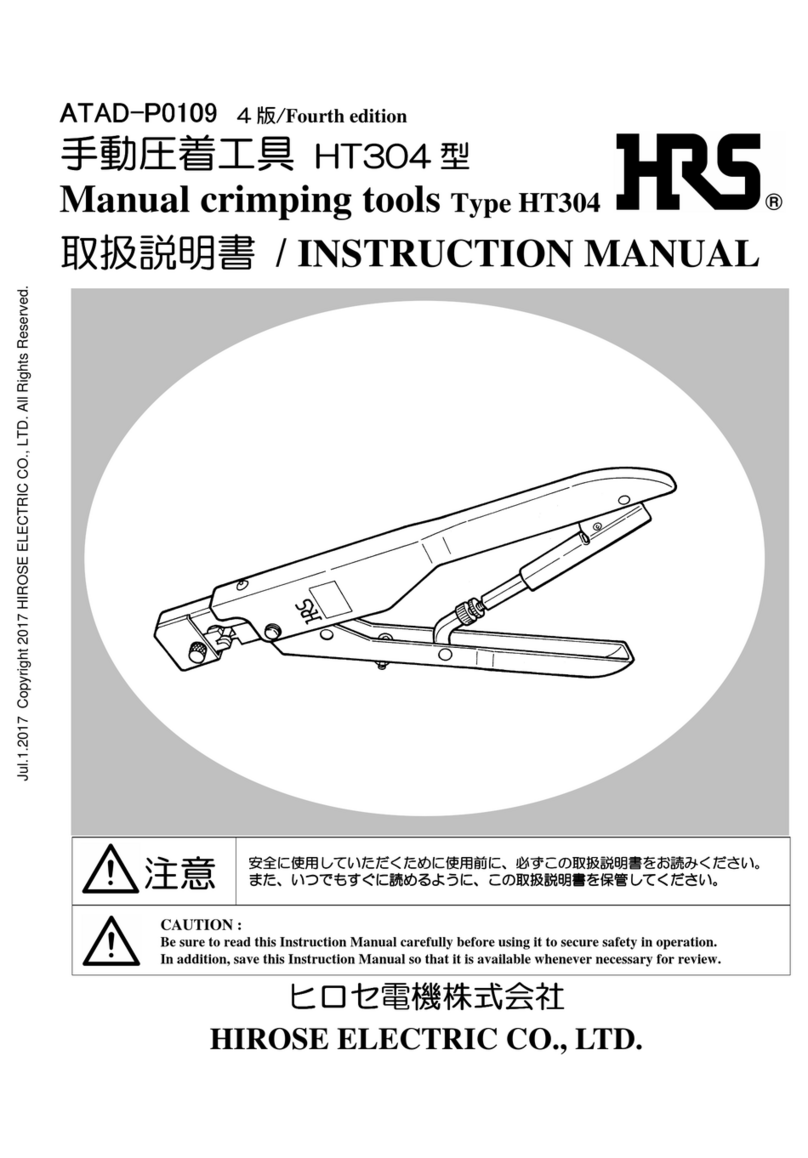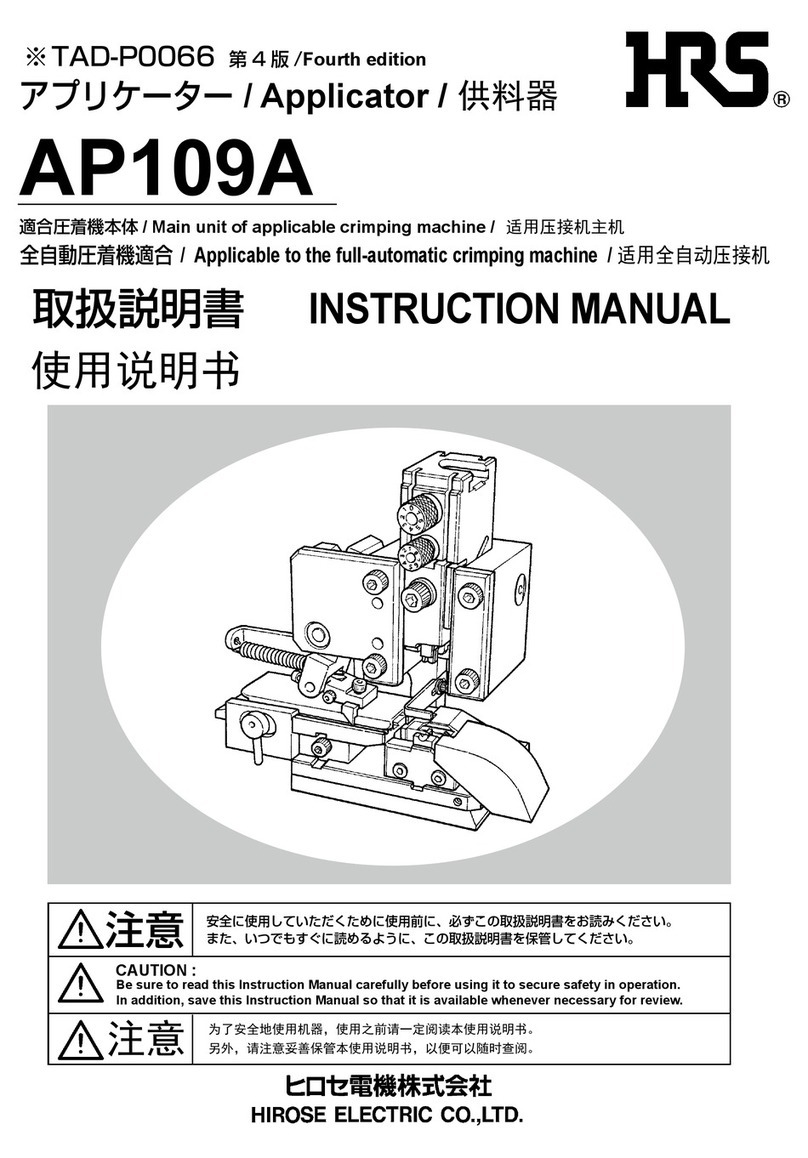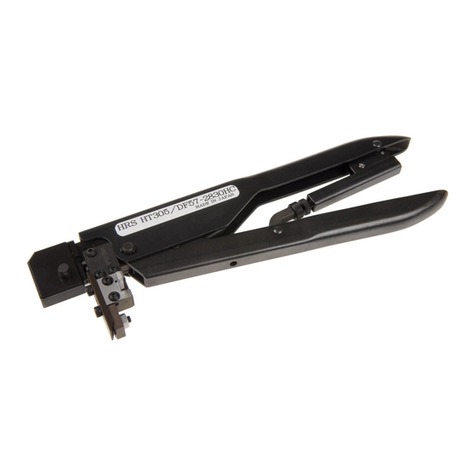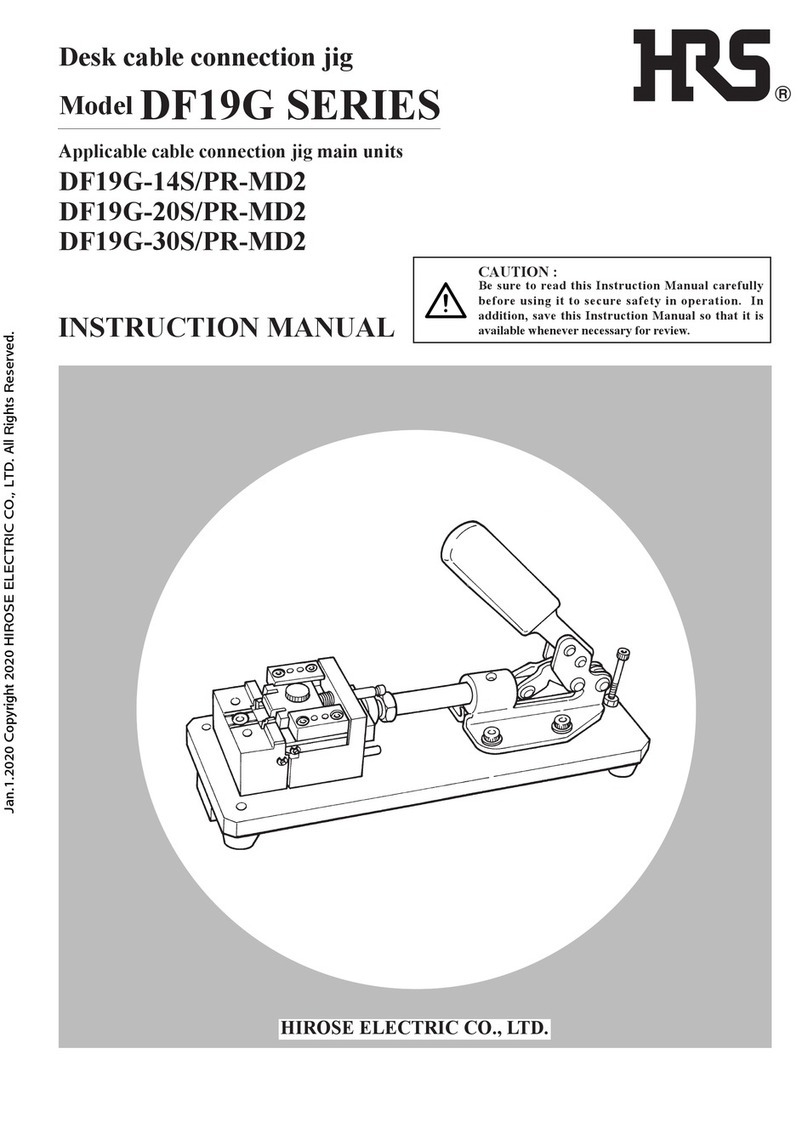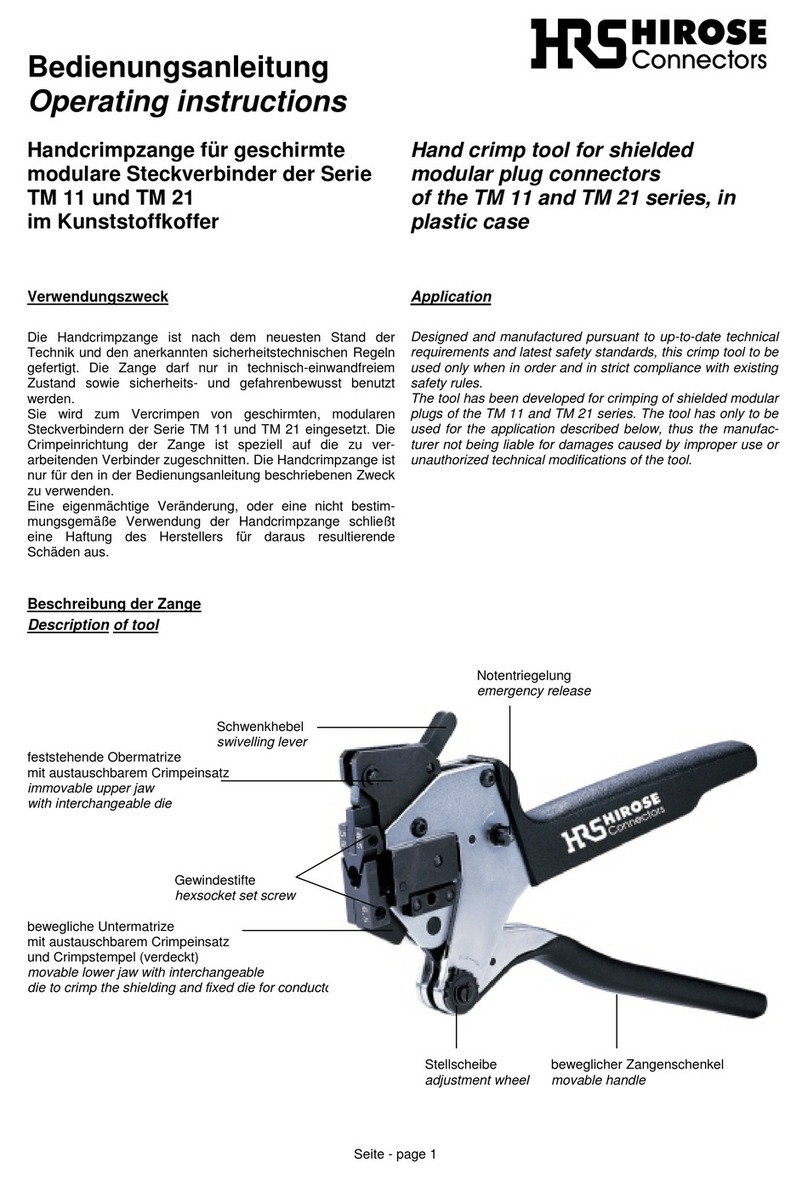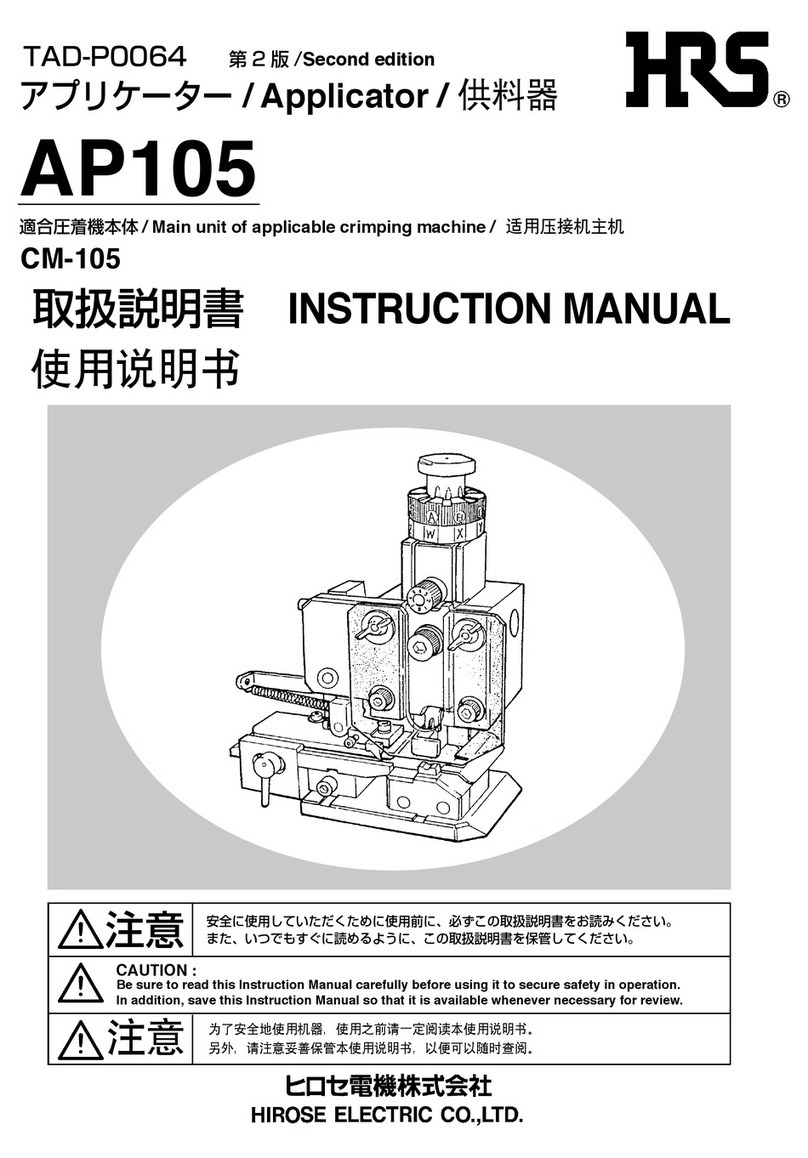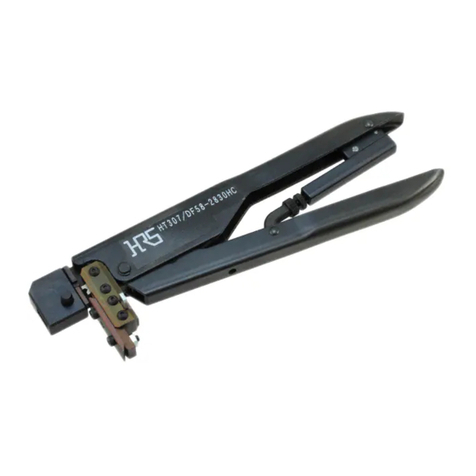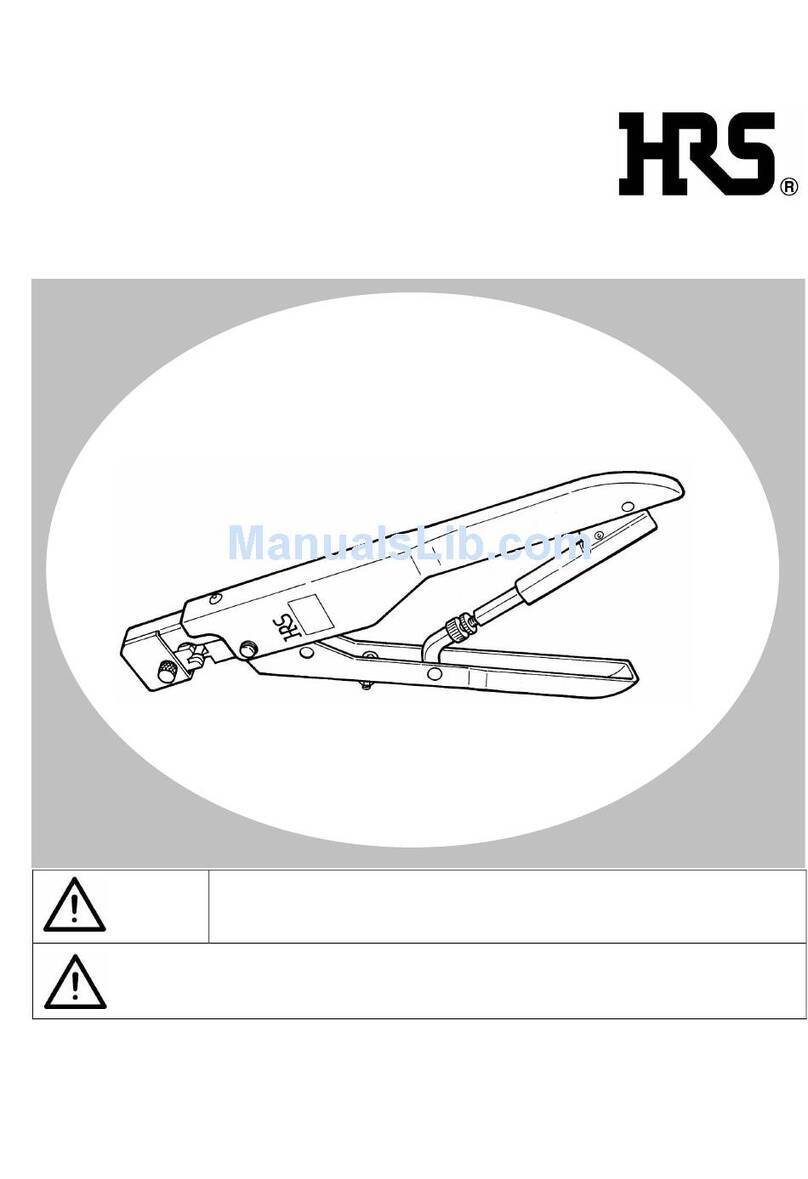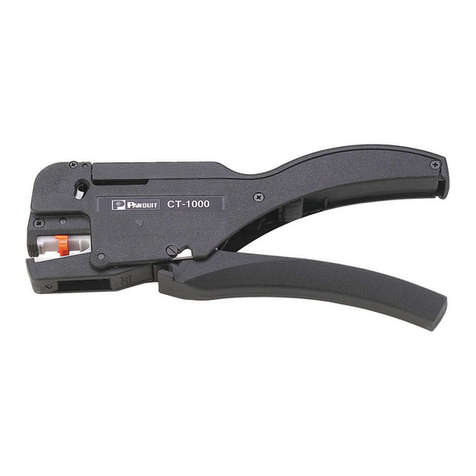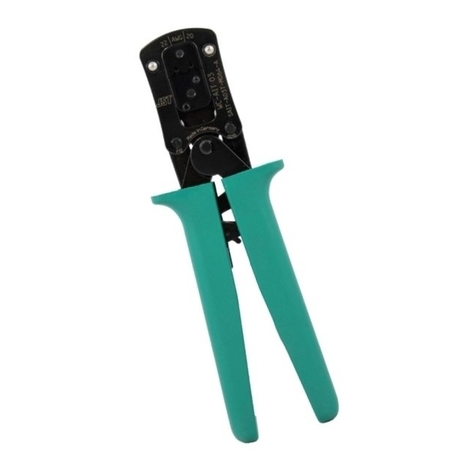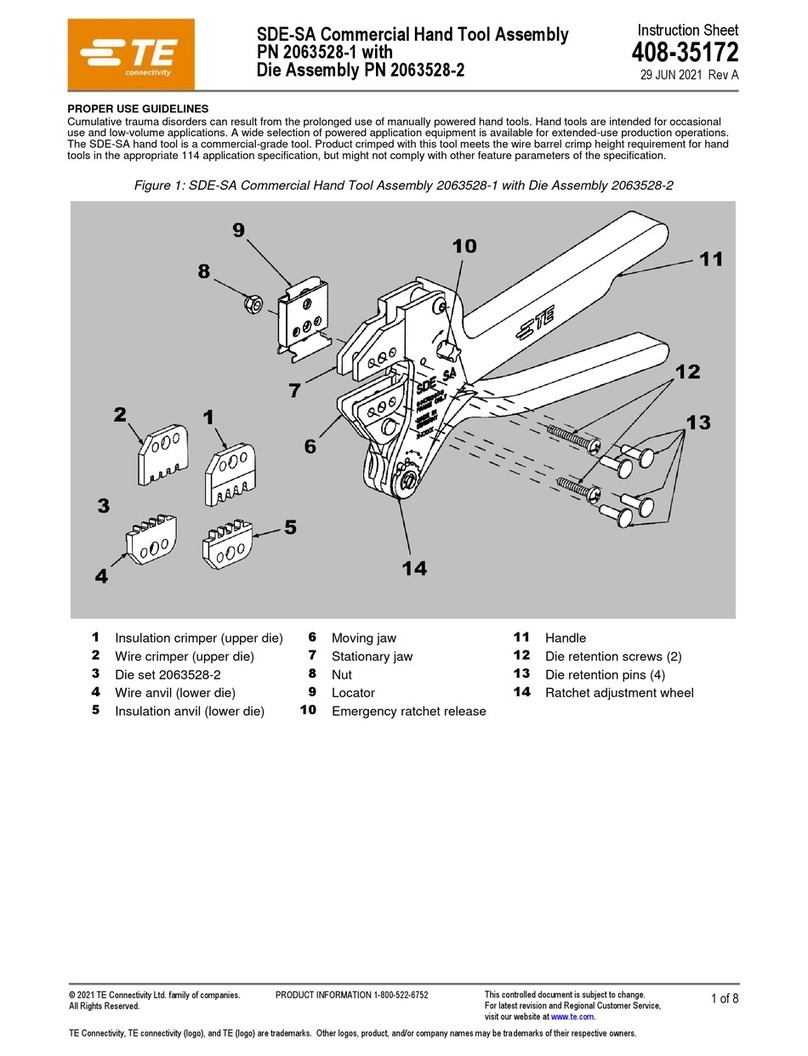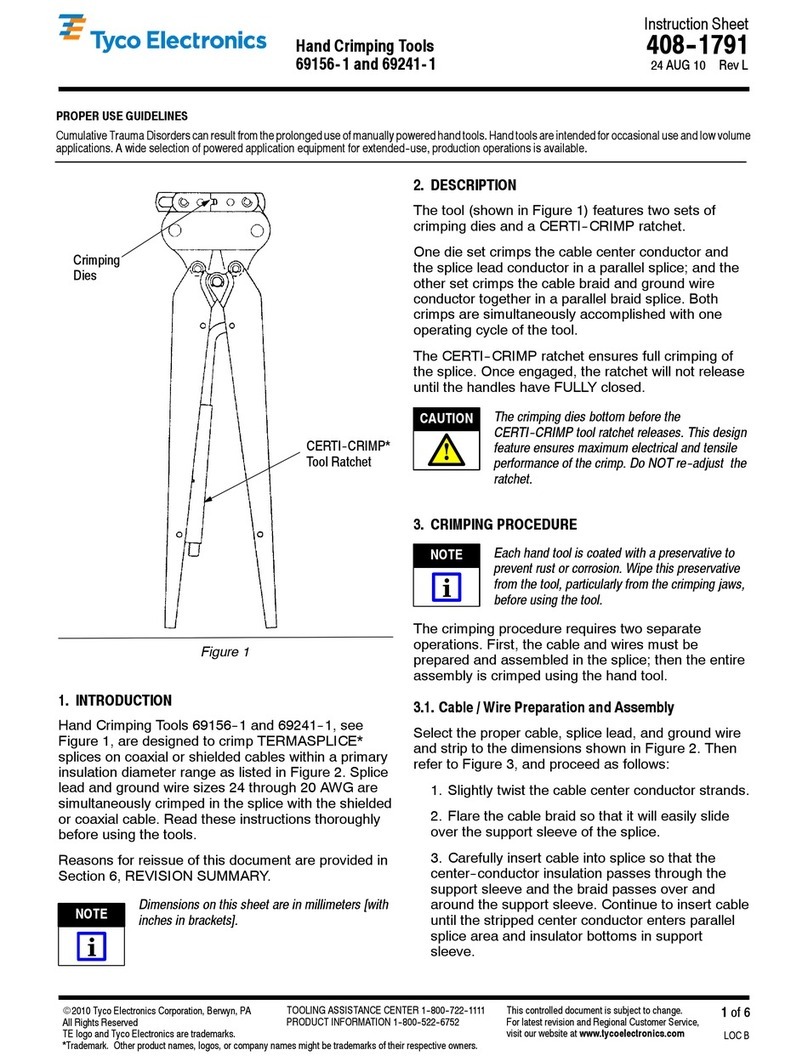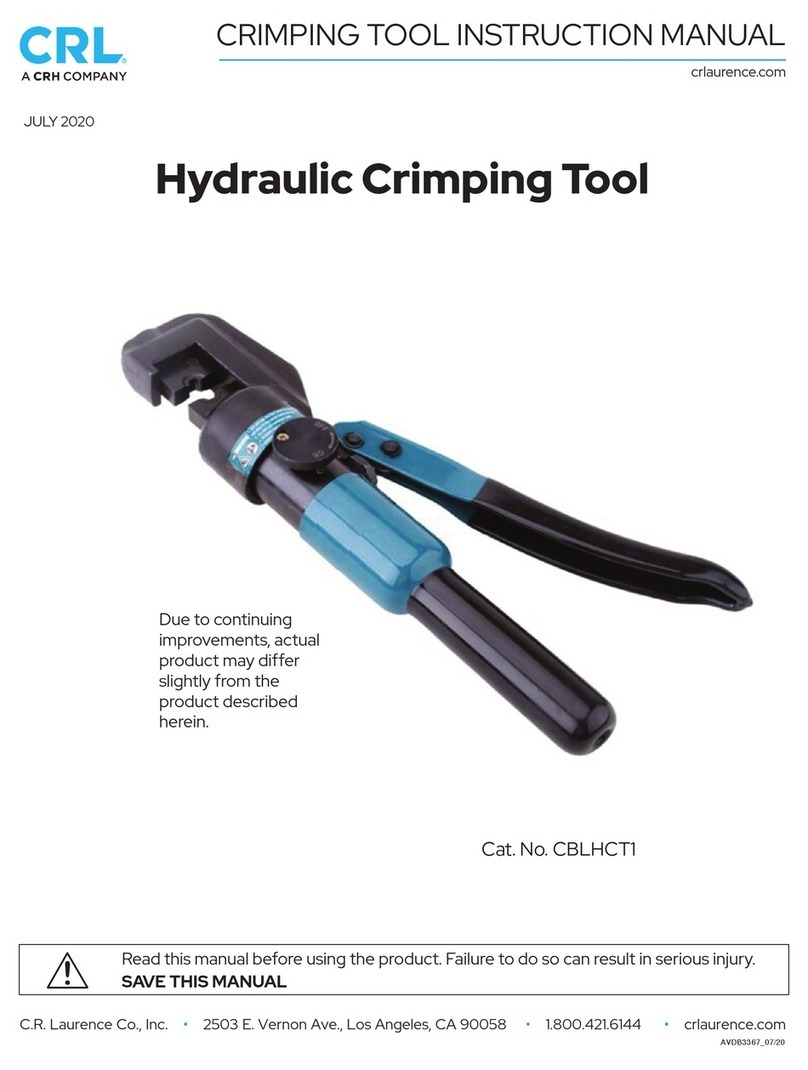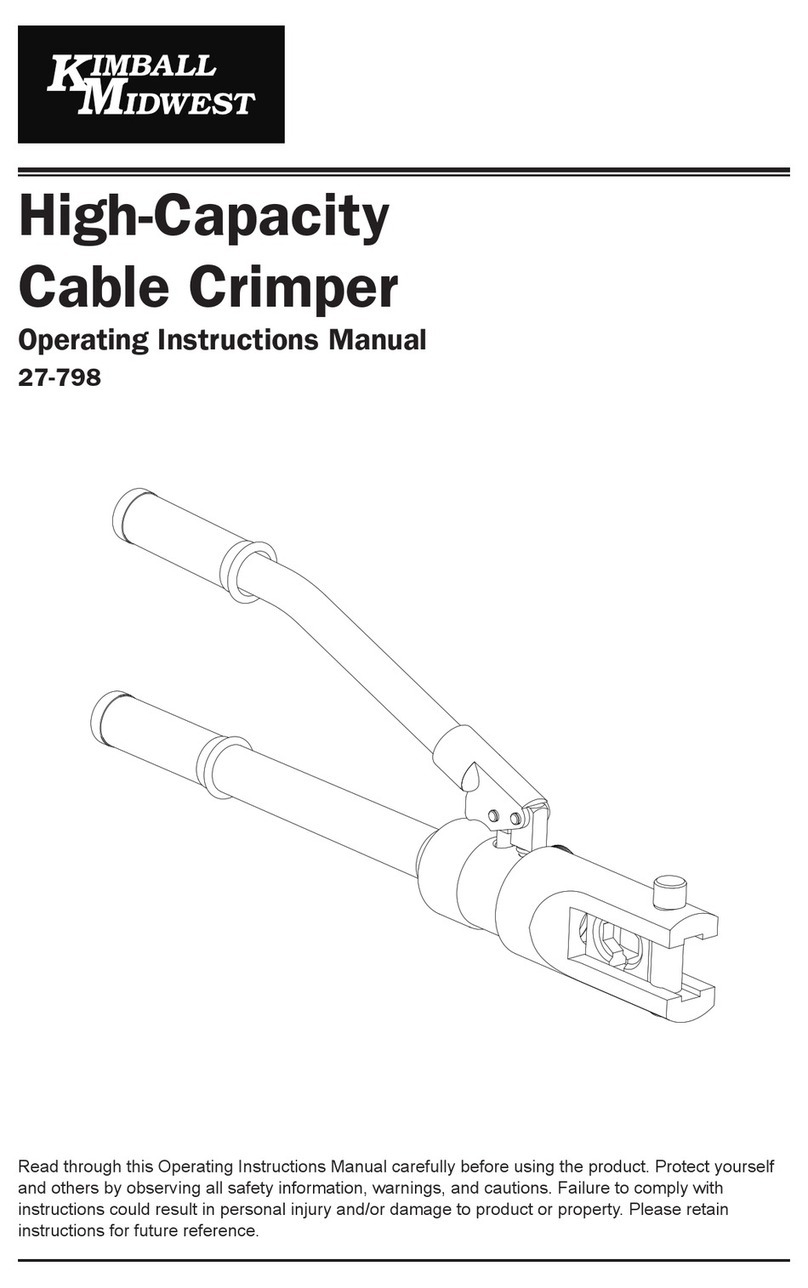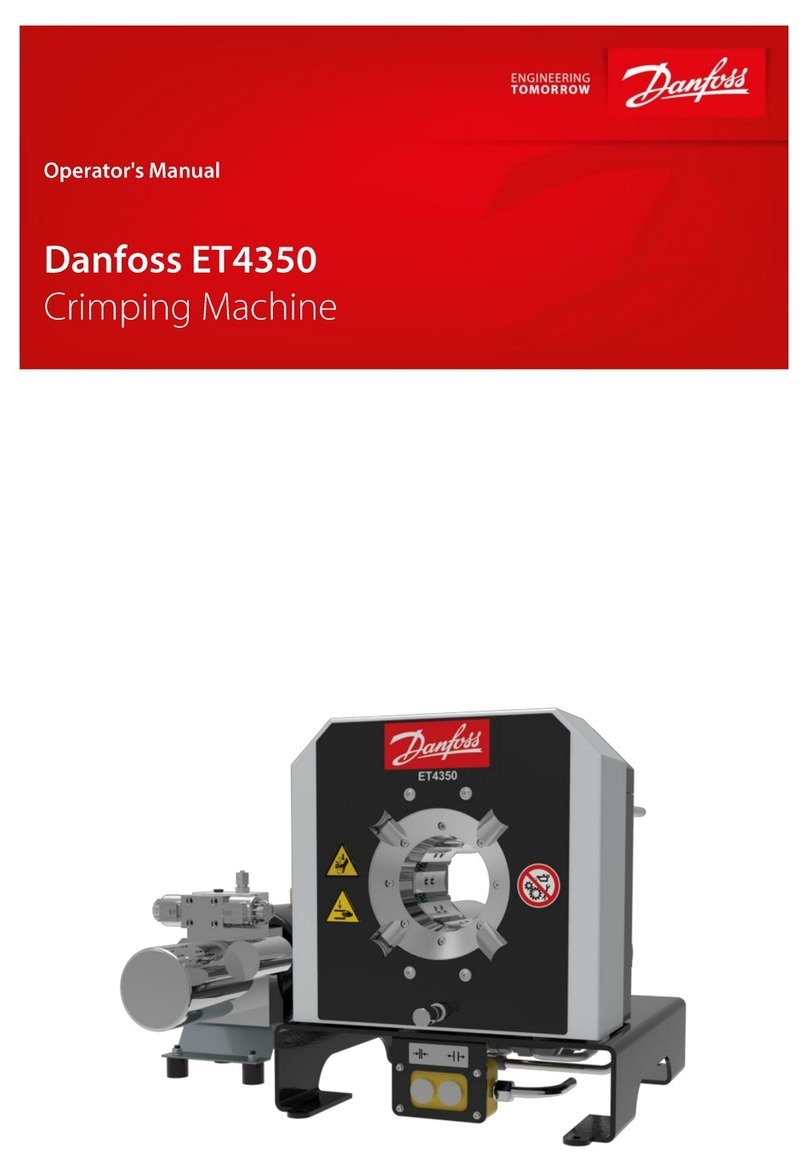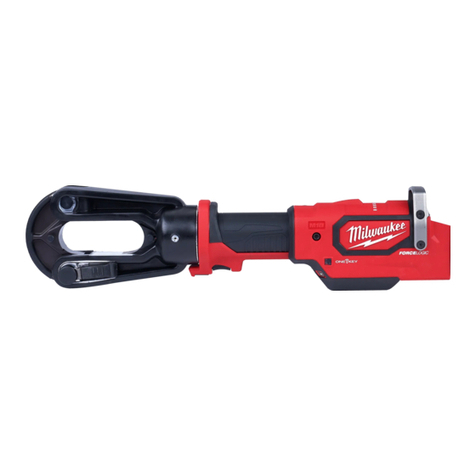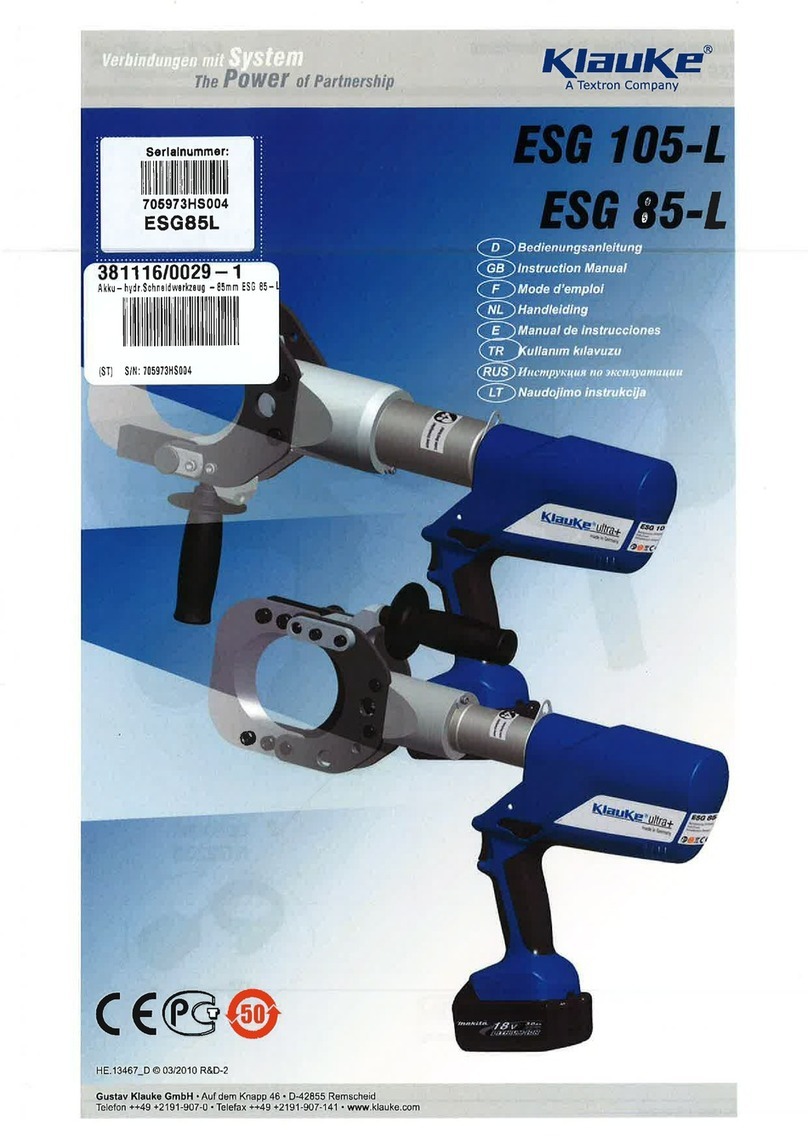
vii
Instrucciones de seguridad en cada categoría
de trabajo tras la entrega de la máquina
Transporte
1. Para protegerse contra posibles accidentes o daños, la máquina debe ser levantada por dos o
más personas. Utilice un cáncamo (armella) acoplado a la máquina y un aparato, como un blo-
quedecadena,diseñadoespecícamenteparalevantarcargapesada.Paramoverlamáquina,
se recomienda una plataforma rodanteo o carretilla.
2. La máquina debe levantarse o moverse de forma segura para evitar caídas.
3. Para transportar la máquina, re-empaquetela en su condición original para evitar proteger
contra accidentes o daños a la máquina. Limpie el aceite acumulado en la máquina antes del
empaquetamiento.
Desempaquetamiento
1. Para protegerse contra lesiones personales, revise cuidadosamente la caja para clavos de ma-
dera. Saque los clavos de las tablas
2. El centro de gravedad de la máquina está en el centro de la sección del cáncamo. Saque la má-
quina del contenedor con cuidado.
Instalación
(I) Banco de trabajo
1.Utiliceunamesaounbancodetrabajoqueresistasucientementeelpesodelamáquinay
la fuerza de reacción desarrollada mientras la máquina está en funcionamiento.
2. Si se van a montar ruedas en la unidad principal del banco de trabajo, use ruedas duraderas
provistas con un mecanismo de freno.
(II) Cable y cableado
1. Para evitar descargas eléctricas, fugas eléctricas o incendios, tenga cuidado de no tensar los
cables en ningún momento.
2. Para evitar peligros de descargas eléctricas, fugas eléctricas e incendios, deben evitarse
conexiones múltiples. Enchufe la máquina directamente en un enchufe.
3. Los enchufes deben estar bien conectados. Para sacar el enchufe, sosténgalo de cuerpo del
conector y no del cable.
(III) Conexión a tierra
1.
Se debe consultar a un electricista profesional para instalar correctamente un enchufe adecuado.
2. Conecte el enchufe de alimentación a un tomacorriente con conexión a tierra adecuada.
3. Esto protegerá contra los peligros de fugas eléctricas y potencial ruptura de voltaje de aisla-
miento.
Antes de la operación
1.Paraprotegersecontraposiblesaccidentesqueresultenenlesionesolamuerte,veriqueque
los conectores y cables estén en buenas condiciones y bien sujetos.
2. Para protegerse contra posibles accidentes que causen lesiones o la muerte, nunca coloque las
manos dentro o cerca de las partes móviles de la máquina.
Lubricación
1.UseaceitedeltipoespecicadoporHirose.
2.
En caso de que el aceite entre en contacto con los ojos o la piel, lávese la piel inmediatamente o en-
juáguese. los ojos para quitar el aceite. Esto protegerá contra irritaciones y erupciones cutáneas.
3. En caso de que ingiera aceite por error, consulte inmediatamente a un médico para prevenir
enfermedades.
Mantenimiento
1. Para evitar posibles accidentes, la reparación y el ajuste de la máquina deben ser realizados
únicamente por personal de mantenimiento que haya sido entrenado sobre la máquina. Se pro-
híbecualquierreparaciónyajustenoespecicadoenesteManualdeInstrucciones.Hiroseno
asume ninguna responsabilidad por accidentes causados por reparaciones o ajustes incorrec-
tos, incluido el uso de piezas no originales).
2. Para proteger contra posibles accidentes y peligros de descargas eléctricas, los trabajos de
reparación y mantenimiento (incluido el cableado) de las partes eléctricas deben ser realizados
por electricistas o ingenieros de Hirose. En el caso de que las piezas eléctricas necesiten repa-
ración y mantenimiento, consulte a cualquiera de las personas mencionadas anteriormente.
3.Paraprotegercontralesionespersonales,vericarquelostornillosytuercasesténapretados
después de completar la reparación o ajuste y/o el reemplazo de piezas.
4. Limpiar periódicamente la máquina mientras esté en servicio. Para evitar posibles accidentes
causados por un arranque brusco de la máquina durante la limpieza, asegúrese de apagar la
energía electrica (incluyendo desenchufar la maquina), antes de comenzar la limpieza..
5. En caso de que su máquina no funcione con normalidad después de los trabajos de reparación
o ajuste, detenga la operación inmediatamente para evitar lesiones personales. Comuníquese
con Hirose para obtener servicio técnico.
